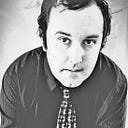A quick read on Mise-en-Scene in “The Shawshank Redemption” (1994)
Mise-en-Scene (French for “staging or putting on an action or scene”, or just “staging”) is really pivotal for a class of movie that The Shawshank Redemption (1994) really touches upon but in my opinion does not rest squarely in, and that is the period piece. The film both is and is not a period piece in my view for two reasons. First, it does do an excellent job in rooting the viewer, through verisimilitude harnessed by its effective use of Mise-en-Scene, in the prison life of two of the film’s main characters in particular: Red (Morgan Freeman) and Andy (Tim Robbins) and the years long stretches inside Maine’s Shawshank Prison that both men were slated to do (until Andy finally tunneled his way out with the tiny rock hammer, only taking about 20 years to do so, and Red got paroled). It is important as this juncture of the discussion to keep in mind that Andy’s stretch of time in particular took in A LOT of American history and social change, particularly the post WWII changes in the country through the late 1940’s (the time period in which Andy’s wife and her lover were shot), the more optimistic but still Cold War shadowed 1950’s, all the way to just before “the summer of love” and all the social change the 1960’s brought this country. So much of both design and composition of the film anchors it solidly in those respective historical periods, while also transcending all of them because of the sheer length of time behind the stone walls of Shawshank Prison. I was particularly struck by the cigarettes that indeed act as currency inside the prison and how they change from the filter less brands smoked by so many people around the years of the Great War (brands like Lucky Strike) and how they evolved, for instance, to the filtered brands on the shelf of the grocery store where Red is hired as a bag boy (more modern brands like Kool can be seen in this section of the film). The changing of Andy’s pinup posters in his cell is another marker of just how effectively Mise-en-Scene was employed in this film. We have a start with a screen shot of the amazing Rita Hayworth in Gilda (1946): the actual title of Stephen King’s short story about Shawshank is titled “Rita Hayworth and the Shawshank Redemption.” To aid in the illusion of time moving forward in a place where indeed it crawls like a snail in the real world (prison), Rita Hayworth is switched to the iconic image of Marilyn Monroe’s dress being blown into the air around her as she stood above a outside grate in Manhattan while filming Billy Wilder’s The Seven Year Itch (1955). It is then switched for the final time to a poster of Raquel Welch in One Million Years B.C. (1966). The use of music is yet another Mise-en-Scene variable used quite effectively in the film. The scene where the J.C. Penny television thief is brought in by bus to Shawshank and Johnny Otis’ “Willie and the Hand Jive” is playing. This musical trend can, in turn, be traced backwards to the genesis of the film and indeed the content itself when a sad jazz/blues song is playing over the old car’s radio while Andy is downing a store bought flask of bourbon and debating about what to do regarding his wife. These are all facets of Mise-en-Scene that are brilliantly incorporated into the film both to add verisimilitude and also help with the movement of the narrative (hence moving time forward).
Briefly returning to the car and courtroom scenes, mise-en-scene is very well done yet again. Wardrobe especially nailed the 1940’s style suits for men and also their fedoras and other hats in my opinion. Wardrobe’s prowess was also very much on display in the final scenes of the movie where Andy is reaping the ill-gotten gains he sewed for the Warden (Bob Gunton) and he is showing off the suit and the Warden’s shoes. Most everything in especially the opening car/courtroom scenes was quite well done if one looks at the verisimilitude they fostered. Every little detail seemed to be super real and super historic: from the automobiles to the cigarettes and even to the glass flask of bourbon Andy drank and dropped on the ground (the brand has been discontinued, as far as I know, and making signs for our family’s liquor distributor for some years now, I feel I can confidently talk about whiskey and the history of the industry in the US). All of these equal a nice degree of verisimilitude in the film, keeping the viewer’s attention because he wants to get as close as possible to experiencing firsthand a bygone era.
Other films that, in my view, have also excelled in Mise-en-Scene include Gladiator (2000) which even went so far as to throw in the incestuous Caesar, also The Cabinet of Doctor Caligari (1920) did it’s mise-en-scene very well (if one understands German Expressionism and a bit of film history). The intentional role of mise-en-scene in these two films is there to first (in Gladiator) establish a high degree of verisimilitude and second (in The Cabinet of Doctor Caligari) to communicate extreme emotional states in the best way possible (the entire film, but especially the prison scene, real shows the power of this timeless film).
